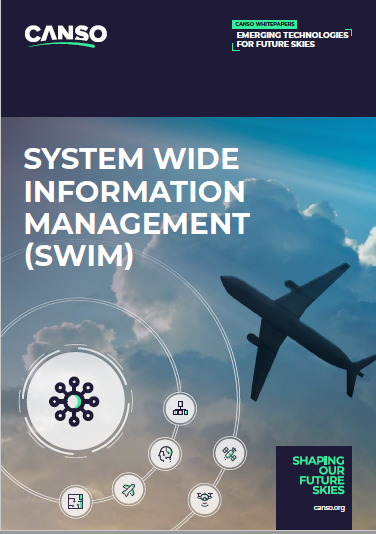It’s time to throw a life raft to SWIM
System Wide Information Management (SWIM) means different things to different people across the CANSO membership and the world of aviation. The one question we’re all asking in chorus in why is an initiative that started 20 years ago still so far from hitting its original goals? What are the issues and how can we seek to address the challenges?

When the CANSO Strategic Technology Work Group decided to look at emerging technologies in a series of whitepapers, SWIM was included. I was excited to lead a team of experts working on the SWIM whitepaper, which provides a deep dive into the latest research and development, maturity levels and progress by region.
Our primary objective was to focus on the lessons learned from implementation initiatives to date, and to present recommendations based on those learnings, sometimes painful in nature, that ANSPs may find useful when analysing the tangible return on a project that needs SWIM to succeed.
The report explores the topic in granular detail yet the answer to the ‘why is progress so agonizingly slow?’ conundrum is paradoxically very simple. The successful implementation of SWIM depends upon a significant tech investment, where some of the benefits are intangible and are not distributed equally, making the return on investment tricky to quantify. And how can we as an industry orchestrate all the complex moving parts, and support the CANSO members to pull this off, when global stakeholder collaboration is inconsistent?
At Cirium, our team of aviation industry experts and data scientists have been working hard to champion change for more than a decade. It’s not quality data that now eludes us – we’ve created solutions for ANSPs designed to deliver the digital transformation we know can make this initiative truly fly. Rather it’s the ongoing reliance on legacy systems and operational and data silos that continue to thwart real progress. But despite the many frustrating challenges, we remain committed to supporting those ANSPs with vision who are ready to break through the barriers of red tape and break out of their data silos to accelerate change.
The 3 keys to accelerate change
- Work together: we need to see collaboration between industry, ANSPs, airlines and airports, unlocking data silos and providing them with seamless rapid access to the data that is at the heart of every ANSP. This will enable ANSPs to realise the real value of data exchange: enhanced operational efficiency and the power of collaborative decision making.
- Start small with clear governance: small projects with in-house experts can yield early benefits using modern software development techniques and an agile approach to development, acceptance, and adoption. SWIM Governance is a vital enabler and does not have to be a complex investment.
- Keep it simple: there are examples from both large and small ANSPs showing the successful combination of people, data, technology, and process to enable a positive operational change for all stakeholders and airspace users.
The clock is ticking. With new entrants to the aviation community such as Remotely Piloted Aviation Systems (RPAS) with Unmanned Traffic Management (UTM) stakeholders, and those operating above FL600 , SWIM must adapt and enable problem solving at a pace faster than has been seen thus far, lest the picture become more confusing and incoherent. The risk is that SWIM becomes decoupled from new entrants and airspace users who develop independent community standards, that in the medium term, delay a vision for global, fully integrated traffic management.
Read CANSO’s latest whitepaper, Emerging technologies for future skies: System Wide Information Management.




